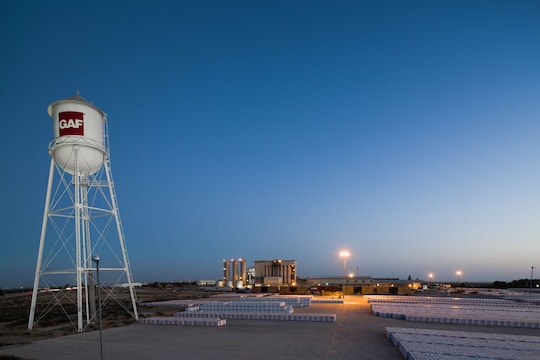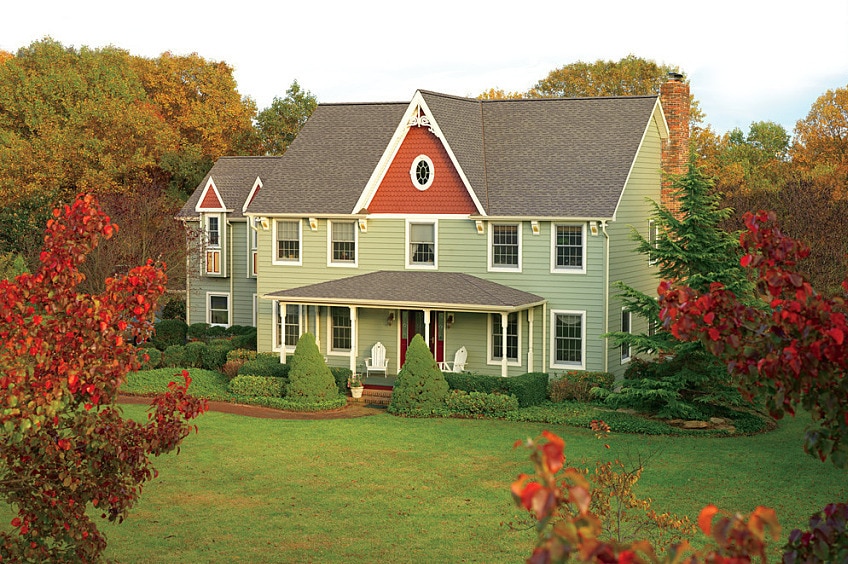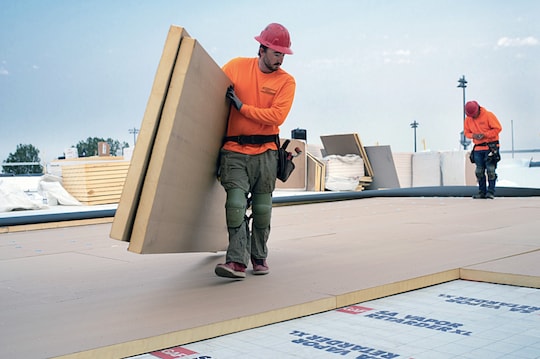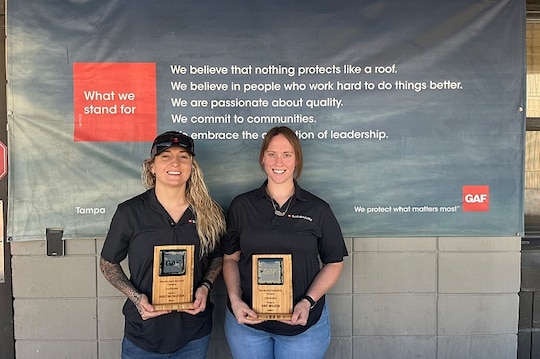
Consumers want to know exactly what they're buying, but making greener purchase decisions requires access to consistent, reliable information. GAF emphasizes roof sustainability in all areas of business. With full product transparency that discloses detailed information about a product's environmental impact through its entire life cycle, potential clients have an opportunity to make informed and eco-friendly decisions.
Within the realm of roof sustainability, that information might include a list of substances found in a given product, how much energy is used to create it, the origin of the product's component parts and materials, which production methods were used, and its community impact.
Product transparency credits from the U.S. Green Building Council (USGBC) reward manufacturers for conducting technical studies and disclosing their findings. GAF holds 48 commercial and roofing product transparency certifications—as a USGBC Platinum partner, the company's commitment to roof sustainability includes helping customers select and specify products for high-performance building projects. GAF accomplishes this through two types of disclosures: Environmental Product Declaration (EPD) and Material ingredients (MAT).
To help more companies think green, GAF has broken down its certification results alongside helpful case studies.
It's all About Performance
As a roofing industry leader, GAF practices and supports new technologies in energy efficiency, material optimization, and recycling in an effort to conserve natural resources. Product transparency helps measure performance and informs how the roofing industry defines successful buildings, including a product's material health and environmental performance. When manufacturers achieve product transparency certification, they gain insights into how their goods impact environmental and human health over their life cycles. Understanding this impact helps manufacturers develop cutting-edge products that offer better performance.
Providing product transparency also makes it easy for builders, architects, and other customers to find and use greener products for LEED, Well, Living Building Challenge, CHPS, BREEAM, and Green Globes high-performance building projects.
"We truly believe that product transparency goes hand in hand with market leadership; it's an integral part of our philosophy at GAF," says Jeff Terry, GAF VP of Corporate Social Responsibility & Sustainability, during a recent webinar hosted by Sustainable Minds, a cloud software and services company that helps integrate environmental performance into product development and manufacturing.
"The cross-sectoral collective effort and impact is the critical path for us to solve some of the big challenges we have in front of us. As roofing manufacturers, we know we have a role to play in helping to address some of these critical opportunities," Terry adds.
GAF has achieved its product transparency certifications through several product lines, including single-ply membrane products, polyiso insulation products, adhesives coatings, and the newest PVC roll, notes Terry.
"We've worked in partnership within the roofing sector to set up more sector-wide environmental product disclosures," he says. The GAF product transparency catalog helps introduce its products to architects, designers, and building owners.
Tracking Innovative New Projects
One example of how product transparency has led GAF to important projects can be found in Georgia Tech's Living Building, the Kendeda Building for Innovative Sustainable Design.
"It's a one-of-a-kind project, and arguably one of the most ambitious green building projects," says Terry, noting that the project went through 20 rigorous performance requirements throughout the building process. "GAF's involvement and our product transparency disclosures helped them realize that a couple of our products fit into this building: They wanted a combination of great insulation, energy efficiency in their systems, and the rooftop solar, all of which helps make this building produce more energy than it uses."
To build a truly sustainable building that's able to function as a living-learning laboratory, the $30 million project needed to incorporate products that met the requirements of the Living Building Challenge certification. EnergyGuard NH Polyiso insulation and EverGuard Extreme TPO 60 mil from GAF fit the bill, says Terry.
"These products helped them achieve the rigorous performance expectations of the building and also supported the effort to capture all the rainwater off the roof, which they put in a catchment to use throughout the building," he says. "It's a real privilege to be a part of such an amazing project."
Gaining Key Learnings and Insights
Roof sustainability and product transparency are not about selling more products—they're about making a better product, says Terry. A focus on product transparency and achieving environmental and health product declarations helps GAF determine how to create products fit for the future.
"We've taken a lot of the learnings from Sustainable Minds' Transparency Catalog to create our own tools to better understand and present our products to our customers and building partners," says Terry.
For example, the GAF EcoScoreCard makes all 45 certifications easily available, and the GAF Green Building Playbook leads customers to the Transparency Catalog.
"A big focus moving forward is: how do we ensure our products and materials stay in the marketplace for as long as they possibly can?" explains Terry.
"People want to fuel themselves with information to identify the best products and brands. We believe product transparency is a window into the kind of company GAF is, and we're betting that homeowners, business owners, specifiers, architects, and designers want to work with companies willing to lead the way in making the best products and making the best information about their products and their company available."
Looking Ahead
As consumers expect more from manufacturers and companies, Terry predicts roof sustainability will take on new definitions.
"Sustainability is core to the operational beliefs of the marketplace, and one of the key aspects of that is transparency around what companies make and how they make it," he says. "The future is not just about transparency, it's about traceability. We're already seeing this in other sectors: customers demand an understanding of where the ingredients of certain products come from. So we in the building sector will need to get our heads around traceability and ensure we're bringing transparency and disclosure into how we make our products and where they come from."
A strong commitment to roof sustainability has made GAF a leader in innovation and supported its work in maintaining product transparency. When manufacturers provide environmental information about their products, that truth lays a foundation of trust that can lead to strong bonds with customers.





